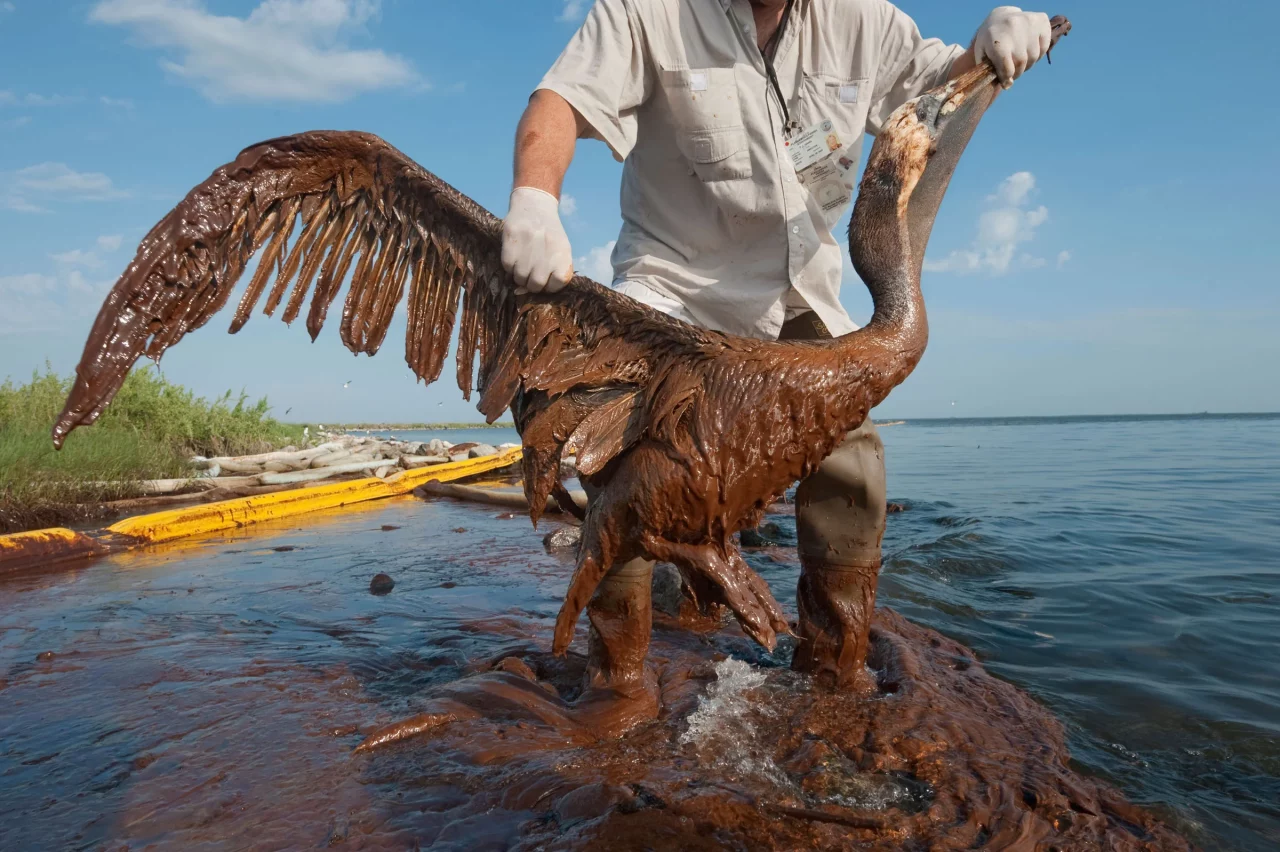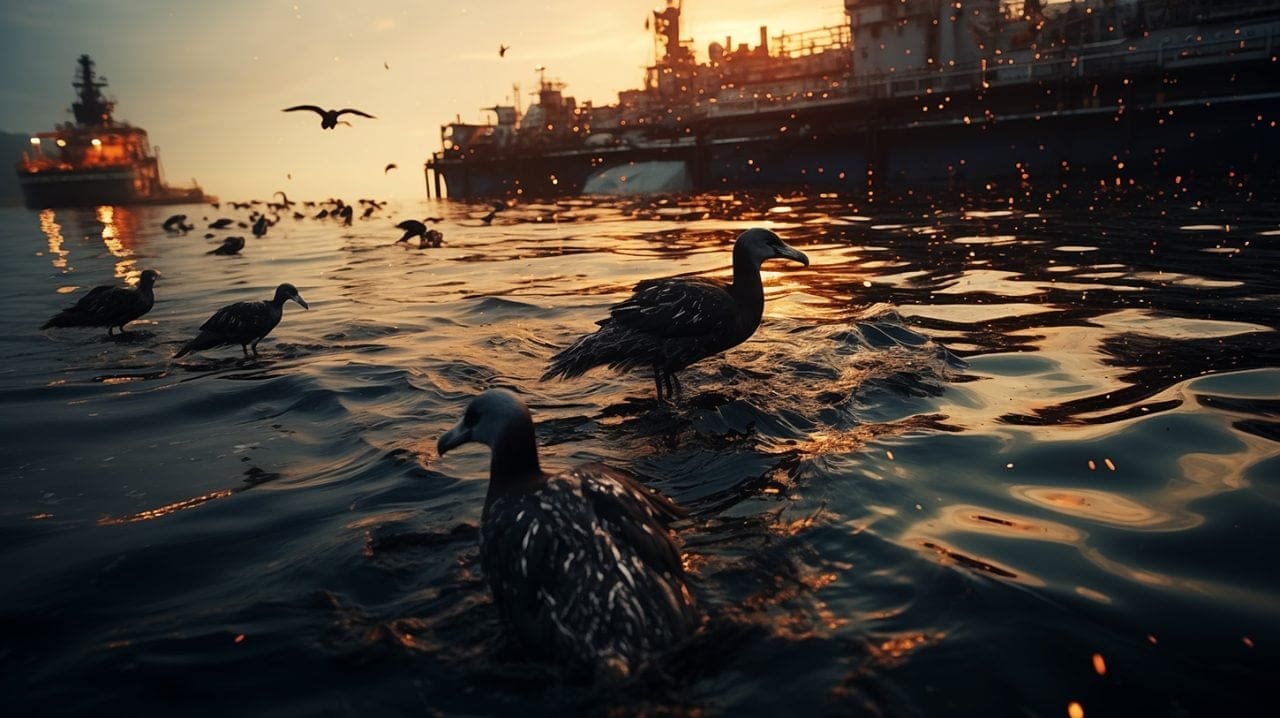Introduction to Oil Spill Bird Impact
Oil spills, one of the most devastating environmental disasters, have a profound impact on various ecosystems, particularly on bird populations around the world. The oil spill bird impact is a critical issue that demands attention, as these spills not only endanger the immediate well-being of birds but also pose long-term threats to their survival and habitats. This article delves into the specific challenges faced by bird populations due to oil spills, exploring the efforts required for their rescue, rehabilitation, and future protection.
The Immediate Effects of Oil on Birds
The Severity of Oil Spill Bird Impact
When oil spills occur, birds are among the most visibly affected wildlife. The oil spill bird impact is immediate and often fatal. Oil-coated feathers lose their waterproofing and insulating properties, causing birds to become hypothermic. Furthermore, as birds preen, they ingest oil, leading to internal injuries and often death. Oil spills also contaminate the birds’ food sources, exacerbating the problem.
Long-Term Consequences for Bird Populations
Beyond Immediate Oil Spill Bird Impact
The oil spill bird impact extends beyond the immediate harm. Long-term effects include reduced reproductive success, habitat loss, and changes in migration patterns. Contaminated areas may no longer provide safe breeding grounds or adequate food supplies, leading to population declines. The oil spill bird impact on the ecosystem balance is significant, as birds play vital roles in their habitats.

Rescuing and Rehabilitating Affected Birds
Addressing the Oil Spill Bird Impact
Rescuing and rehabilitating birds affected by oil spills are complex tasks. It requires specialized cleaning to remove oil without causing further stress or harm to the birds. Rehabilitation efforts focus not only on physical recovery but also on ensuring the birds can return to the wild. These efforts are crucial in mitigating the oil spill bird impact and aiding in population recovery.
Challenges in Protecting Birds from Future Oil Spills
Preventing Oil Spill Bird Impact
Preventing future oil spill bird impact requires a multi-faceted approach. This includes enhancing safety measures in oil transportation, implementing stringent regulations in oil extraction areas, and improving response strategies for spills. Protecting bird habitats from oil spill risks is also a key factor in minimizing future oil spill bird impact.
The Far-Reaching Effects of Oil Spills on Birds
Immediate and Long-Term Consequences
Oil spill bird impact is immediate and can be catastrophic. When birds come into contact with oil, it clings to their feathers, destroying their natural waterproofing and insulation. This leads to hypothermia, loss of buoyancy, and, in many cases, death. Furthermore, oil spills can contaminate birds’ food sources, leading to long-term health problems and diminished reproductive success, which ultimately affects bird populations on a global scale.
Species at Risk: A Worldwide Concern
Oil Spill Bird Impact Across Continents
The oil spill bird impact is not limited to a single region but is a concern across continents. From the puffins in the North Sea to the pelicans along the Gulf of Mexico, oil spills have left a trail of devastation affecting a wide range of species. Each region presents its unique challenges, as different species react differently to oil contamination, making the task of rescue and rehabilitation even more complex.
Challenges in Rescuing and Rehabilitating Birds
Navigating Difficulties in Treatment
Rescuing birds affected by oil spills is a delicate and challenging process. The oil spill bird impact necessitates immediate cleaning to remove oil from feathers, but this process must be done carefully to prevent additional stress or injury to the birds. Additionally, rehabilitators face the challenge of treating internal damage caused by ingested oil, which often requires specialized veterinary care.
Protective Measures and Preventive Actions
Safeguarding Avian Species
To mitigate the oil spill bird impact, preventive measures are as crucial as rescue and rehabilitation efforts. This includes strengthening regulations on oil transportation and drilling, improving spill response strategies, and establishing protected areas for critical bird habitats. Educating the public and raising awareness about the oil spill bird impact can also lead to greater support for conservation efforts.
Collaborative Efforts for Avian Conservation
A United Front Against Oil Spill Bird Impact
Addressing the oil spill bird impact requires a collaborative approach involving governments, environmental organizations, and the public. Joint efforts in monitoring bird populations, conducting research on the impact of oil on different species, and developing innovative cleaning and treatment methods are vital for effective bird conservation post-oil spills.
Global Efforts and Collaborations
United Against Oil Spill Bird Impact
Combating the oil spill bird impact is a global challenge that necessitates international collaboration. Sharing best practices in wildlife rescue, advocating for stricter environmental policies, and conducting joint research on oil spill effects on birds are some of the collaborative efforts needed to address this issue.
How AQUAQUICK 2000 Breaks Down Oil Without Harming Wildlife
The Science Behind AQUAQUICK 2000’s Effectiveness
AQUAQUICK 2000 stands out in the field of environmental cleanup solutions, particularly for its unique ability to break down oil efficiently while ensuring the safety of wildlife. This capability is rooted in its advanced scientific formulation, which strikes a crucial balance between efficacy in oil breakdown and environmental friendliness.
The Chemistry of Oil Breakdown
AQUAQUICK 2000 is designed to tackle the molecular structure of oil. Oil, being hydrophobic, does not mix with water and tends to form a slick on the water surface. The formulation of AQUAQUICK 2000 includes surfactants and emulsifying agents that penetrate the oil molecules. These components break the oil into smaller droplets, a process known as emulsification. By reducing the size of the oil droplets, AQUAQUICK 2000 makes the oil more soluble in water, which significantly aids in its removal and breakdown.
Eco-Friendly and Biodegradable Components
One of the defining features of AQUAQUICK 2000 is its composition of eco-friendly and biodegradable components. Unlike some traditional oil dispersants that contain harsh chemicals, AQUAQUICK 2000’s ingredients are chosen for their low environmental impact. These components degrade naturally over time, minimizing any long-term ecological damage. This aspect is crucial, especially when treating areas rich in biodiversity and in proximity to wildlife habitats.
Ensuring Wildlife Safety
When it comes to wildlife rescue post-oil spill, the safety of the cleaning agents used is paramount. AQUAQUICK 2000’s formulation is gentle on wildlife, an essential consideration given the vulnerability of animals during oil spill incidents.
Non-Toxic to Marine Life
The non-toxic nature of AQUAQUICK 2000 ensures that animals exposed to treated water or undergoing cleaning with the solution do not suffer from adverse health effects. This non-toxicity is particularly important for marine organisms, birds, and mammals that might ingest or come into contact with the solution during the cleanup process.
Effectiveness in Wildlife Cleaning
In wildlife cleaning operations, AQUAQUICK 2000 effectively removes oil from the fur, feathers, and skin of animals. Its gentle action ensures that the natural oils and protective layers of wildlife are preserved, which is critical for their survival post-treatment. The solution helps in restoring the insulation and waterproofing properties of feathers and fur, which are crucial for the animal’s thermoregulation and buoyancy.
Aiding Complete Recovery
The use of AQUAQUICK 2000 in wildlife treatment is part of a broader rehabilitation strategy. Post-cleaning, animals undergo a recovery phase where they are monitored for any signs of stress or health issues. The efficacy of AQUAQUICK 2000 in removing oil aids in the animals’ overall recovery process, ensuring they can be safely released back into their natural habitats.
Break down oil effectively
AQUAQUICK 2000’s ability to break down oil effectively while ensuring the safety and wellbeing of wildlife is a remarkable achievement in environmental cleanup technologies. Its innovative formulation strikes the necessary balance between robust cleaning power and ecological sensitivity, making it an invaluable tool in the fight against oil pollution and in the protection of our precious wildlife














